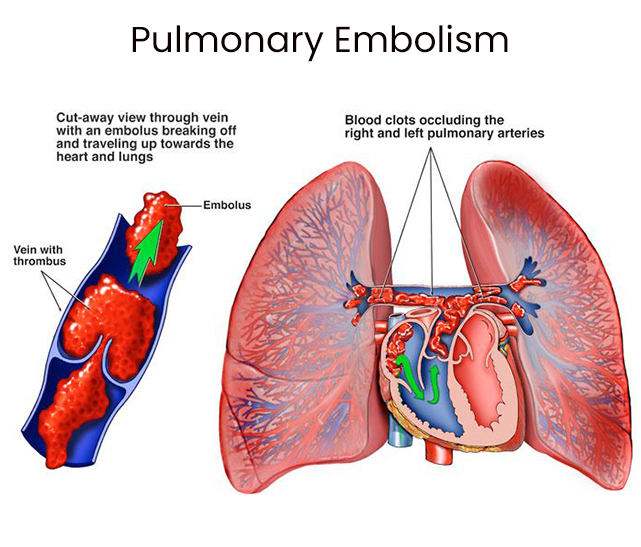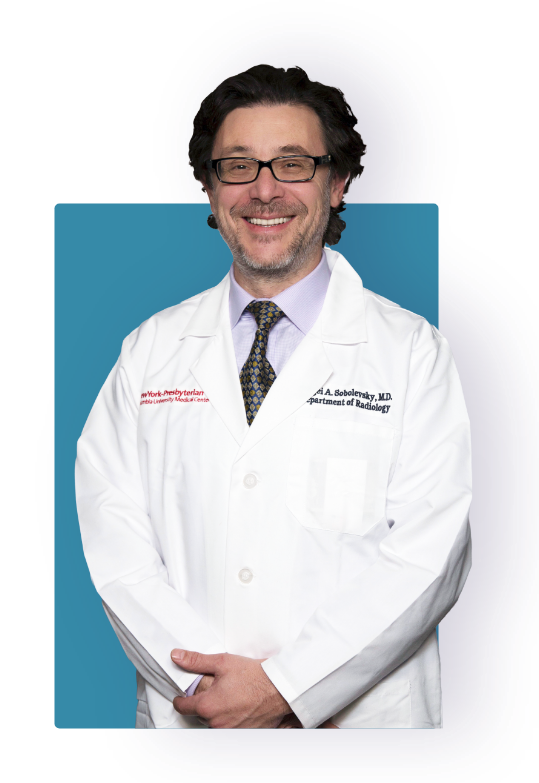Blood clots are very serious and need quick treatment. Recognizing the signs and symptoms of DVT and pulmonary embolism can save your life and help you enjoy a healthier lifestyle, as they are medical conditions that result from blood clots. Both these conditions can have life-threatening consequences if you are not careful. Visit Dr. Sergei A. Sobolevsky at Downtown Vein & Vascular Center for more information on blood clots, why they form and to learn about treatment options that can minimize your risk of severe complications.
Blood clots are gel-like collections of blood that form in your veins or arteries when blood changes from liquid to partially solid. Clotting is normal and stops the body from bleeding too much when you get hurt. However, clots can become dangerous when they do not dissolve on their own. In such cases, treatment becomes necessary to prevent life-threatening outcomes.
Abnormal blood clots can form due to problems such as sluggish blood flow through the veins, an abnormality in clot-forming factors, or an injury to the blood vessel wall. Staying healthy and active can help prevent the formation of blood clots.
Deep vein thrombosis (DVT) and pulmonary embolism are the most common signs and symptoms of blood clots.
Deep Vein Thrombosis
Deep vein thrombosis (DVT) is a medical condition that occurs when a blood clot forms in a vein. These clots develop deep within the body, usually in the lower leg, thigh, or pelvis, but can also occur in the arm. They cause swelling or pain, but sometimes there are no noticeable symptoms.
It is necessary to get treatment right away to prevent serious complications. Treatment may be long and slow and even require surgery if your clots do not go away with medication and lifestyle modifications.

Signs and Symptoms of DVT
Commonly experienced signs and symptoms of DVT include:
- Swelling – You will notice swelling in the leg or arm, at the exact spot where the blood clot has formed, or your entire leg or arm could swell.
- Change in skin color – You will see that your leg or arm is taking on a red, blue, or purple tinge depending on the color of your skin or gets itchy as the blood supply is affected.
- Pain – As the clot increases in size and worsens, you will feel pain. It can range from a dull ache to intense pain. You will notice throbbing pain in your leg, belly, or even arm.
- Warm skin – The skin around the area with a blood clot will be warm, as compared to the skin on other parts of the body.
- Trouble breathing – If you are having trouble breathing, it may be a sign that the clot has moved from the arm or legs to the lungs. You can also have a bad cough or cough up blood, feel pain in your chest, or feel dizzy. It is a medical emergency and needs immediate attention.
- Cramp in the lower leg – If there is a clot in your calf or lower leg, you will feel as if you have a cramp or a Charley Horse, a muscle spasm when a muscle suddenly tightens up on its own and cannot relax.
- Pitting edema – DVT can cause a buildup of fluid, known as edema, in the arms or legs. It typically happens quickly, and when you press on the swollen area, it can cause a dimple or pit that remains for a few seconds.
- Swollen and painful veins – If there is a pain in the veins, it may increase with touch or movement.
Deep vein thrombosis can be critical. It can also occur without noticeable symptoms, which makes it very dangerous. The blood clots in the veins can break loose, travel through the bloodstream, and get stuck in the lungs, blocking the blood flow. This condition is known as pulmonary embolism. When DVT and pulmonary embolism occur together, it is called venous thromboembolism (VTE).
It is essential to seek medical help right away if you experience any of these symptoms, as they require immediate vein treatment.
Read more: Adenomyosis You Might Have It And Not Know About It
Pulmonary Embolism
A pulmonary embolism is a blood clot that blocks and stops blood flow to an artery in the lung. It occurs when a clot in another part of the body, often your leg or arm, moves through the veins to the lungs. In most cases, the blood clot starts in a deep vein in the leg and travels to the lung.
A PE restricts blood flow to your lungs, lowers oxygen levels in the lungs, and increases blood pressure in the pulmonary arteries. Without proper and quick treatment, a pulmonary embolism can cause heart or lung damage and even death. Pulmonary embolism is a life-threatening complication of deep vein thrombosis. Taking measures to avoid the formation of blood clots in your legs can protect you from pulmonary embolism.

Signs and Symptoms Of PE
Clots can break off from DVT and travel to the lungs, causing a pulmonary embolism, which can be fatal if it is not timely diagnosed and treated.
Common symptoms of PE include:
- Shortness of breath – This symptom usually appears suddenly. You will have trouble catching your breath even when resting and it worsens with physical activity.
- Pain in the chest – You will feel as if you are having a heart attack. The pain is often sharp, stabbing, and felt when you breathe in deeply. The pain can stop you from drawing a deep breath. You can also feel chest pain when coughing, bending or leaning over.
- Fainting – If your heart rate or blood pressure drops suddenly, you may pass out. It is syncope and indicates that the brain is not getting sufficient oxygen.
Other symptoms that can occur with pulmonary embolism include:
- Cough that may include blood or blood-streaked mucus
- Rapid or irregular heartbeat or increased pulse
- Lightheadedness or dizziness
- Excessive sweating
- Fever
- Leg pain or swelling, or both, usually in the back of the lower leg
- Clammy or discolored skin, called cyanosis
If you experience these PE symptoms, call your doctor immediately or rush to an emergency room as a blood clot, particularly a large clot or many clots can quickly cause serious, life-threatening consequences and death.
Read more: What are Degenerating Fibroids?
How to Prevent Blood Clots?
Preventing blood clots in the deep veins in your legs will help avert pulmonary embolism. It is often difficult to detect a DVT before the problem starts, but prevention of DVT is crucial for the prevention of PE.
Ways to prevent blood clots include:
- Regular exercise to encourage better flow of blood
- Drinking plenty of fluids
- Eating a healthy, balanced diet
- Avoiding tobacco products
- Limiting alcohol and caffeine intake
- Avoiding wearing tight-fitting clothing
- Losing weight if you are overweight
- Keeping your legs elevated for 30 minutes, twice a day
- Avoiding crossing your legs
- Wearing compressions stockings
A healthy lifestyle is key to preventing deep vein thrombosis and PE. It is essential to talk to your healthcare provider about your risk factors, especially if you or any of your family members have had a blood clot. If you are not experiencing any symptoms, you may be even at a greater risk for critical complications.
Read more: What Causes Swollen Legs from the Knee Down?
How to Treat Blood Clots?
Treating blood clots is essential to prevent them from getting larger or breaking loose. Timely treatment can reduce your chances of developing more clots in the future. Treatment depends on where the blood clot is and how likely it is to harm you.
Your doctor may recommend the following:
- Medication – Anticoagulants, also called blood thinners, can prevent blood clots from forming. Drugs called thrombolytics can dissolve clots that are already formed, to avoid life-threatening conditions.
- Surgery – You may have to undergo a catheter-directed thrombolysis procedure that delivers medication directly to the clot to help it dissolve. Your vein specialist may also use special instruments to carefully remove the clot.
- Stents – If needed, the doctor may place a stent to keep the blood vessel open.
- Vena cava filter – If you cannot take blood thinners, the specialist may put a filter in the inferior vena cava, the largest vein in the body, to trap or catch blood clots before they can travel to the lungs.
Blood clots need urgent treatment, and any symptoms should be evaluated by a doctor immediately, as they can lead to strokes and heart attacks.
Diagnosing a blood clot is often difficult as most people do not experience symptoms or fail to recognize them. If you are at high risk of developing a blood clot, it is best to seek immediate medical guidance. Dr. Sergei A. Sobolevsky at Downtown Vein & Vascular Center assesses your condition and recommends the best medications and other therapies to help treat blood clots. He is an experienced endovascular specialist and offers the highest quality care to ensure you are back to routine life with minimum downtime.

Sergei Sobolevsky, MD, is a leading specialist in endovascular medicine with experience in vascular and interventional radiology. Dr. Sobolevsky has decades of experience in the field, with over 25,000 procedures performed, accumulating extensive experience in image-guided minimally invasive medicine, diagnosing and treating a range of conditions.
Dr. Sobolevsky earned his Doctor of Medicine (MD) degree in 1997 from the University of Colorado School of Medicine. He received his specialty clinical training in vascular and interventional radiology at Harvard University. Later, he earned his MBA from the MIT Sloan School of Management. Recognized as a Castle Connolly Top Doctor and named to the Top Doctors New York Metro Area in 2020, 2021, and 2022, Dr. Sobolevsky is licensed in multiple states, has delivered presentations at numerous institutions in the US and abroad, and now acts as a clinical advisor for the biomedical industry. He also held multiple positions in the field during his career, including Chief of Vascular and Interventional Radiology at the Columbia University Medical Center in New York, NY, Senior Vice President in Clinical and Regulatory Affairs at Artann Laboratories in North Brunswick, NJ, and Medical Director at the American Endovascular and Amputation Prevention Center in Brooklyn.
More About Dr. Sobolevsky
